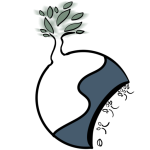Earlier we encountered the concept of “Great Beauty,” and now let us deepen our understanding of it. Consider how Mencius defined beauty—through six distinct dimensions. He proposed that aesthetics can be divided into six levels:
First, “That which stirs universal desire is goodness” — “desire” here refers to what awakens longing in all people. Only such things can touch upon goodness.
Second, “Authenticity lies in embodying it oneself” — How do I have many friends? Through sincerity and trustworthiness.
Third, “Inner abundance constitutes beauty” — Note this: “abundance” refers to the infusion of vital energy (jing, qi, and shen) within oneself. This isn’t about being physically full, like after overeating—which is not beauty at all. Rather, it speaks of the flourishing of our inner vitality.
Fourth, “Abundance that radiates constitutes greatness” — This is “Great Beauty.”
Fifth, “Greatness that transforms constitutes sagehood” — A sage can internalize this abundant beauty, this greatness, and transform it into life energy.
Sixth, “Transformation beyond comprehension, sagehood beyond comprehension constitutes divinity” — Do you see? Reaching the divine realm, the stage of sacredness, is the ultimate beauty. Thus, beauty itself carries sacredness, meaning our very lives possess sacredness.
Therefore, when we speak of the beauty of the I Ching (Book of Changes), we are not treating it as rigid, immutable truth—some unassailable knowledge to be mechanically propagated. Not at all. Instead, we aim to uncover the beauty of life inherent in the I Ching and engage with those present—especially calligraphers—to explore, communicate, and excavate the beauty within this classic, within the wisdom of the sages, within the I Ching itself, and within life. That is what we seek to discover.
Now, having discussed the beauty of heaven and earth earlier, we turn to the beauty of imagery and numerology (xiàng and shù). These are two distinct concepts. Within “imagery” (xiàng) lies the Xiang Zhuan (Commentary on the Images), which I will address later. The reason the I Ching is regarded as the mother of aesthetics is largely due to its profound exploration of the beauty of imagery. We must clarify: What is xiàng (image)? What is xíng (form)? What is xíngxiàng (form-image)? What is xiǎngxiàng (imagination)? These are all questions we will explore.
Regarding xiàng, the opening section of the Xici Zhuan (Great Treatise) explicitly states:

发表回复